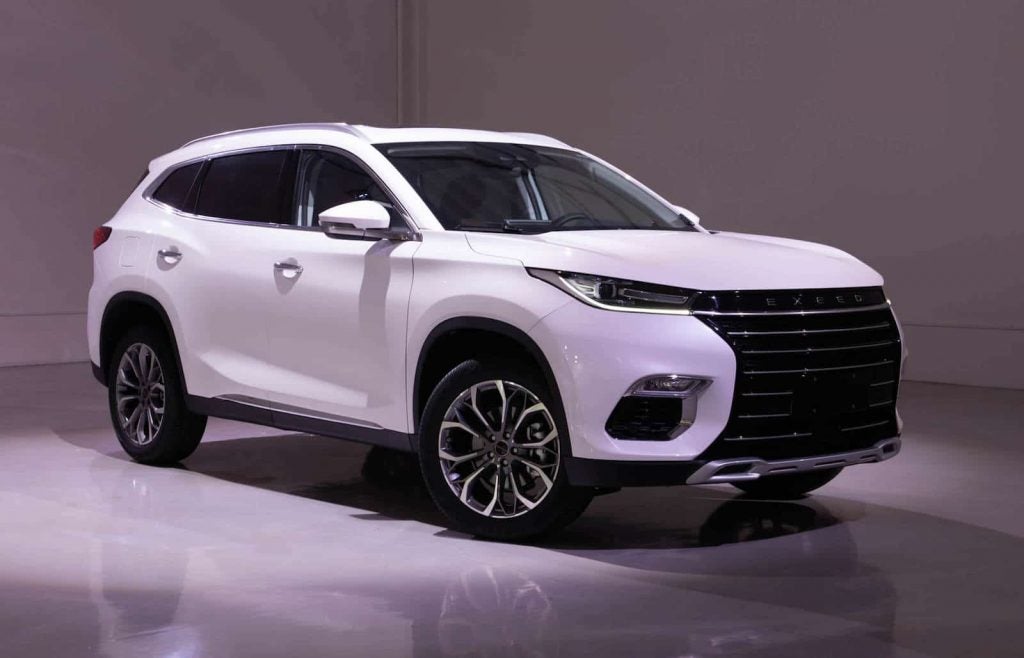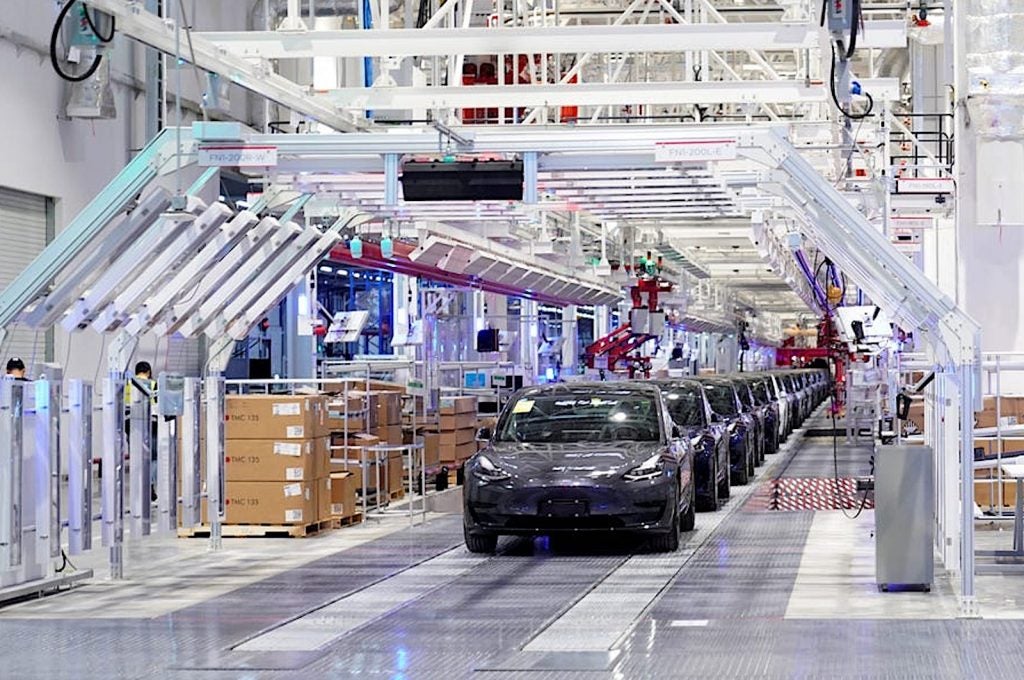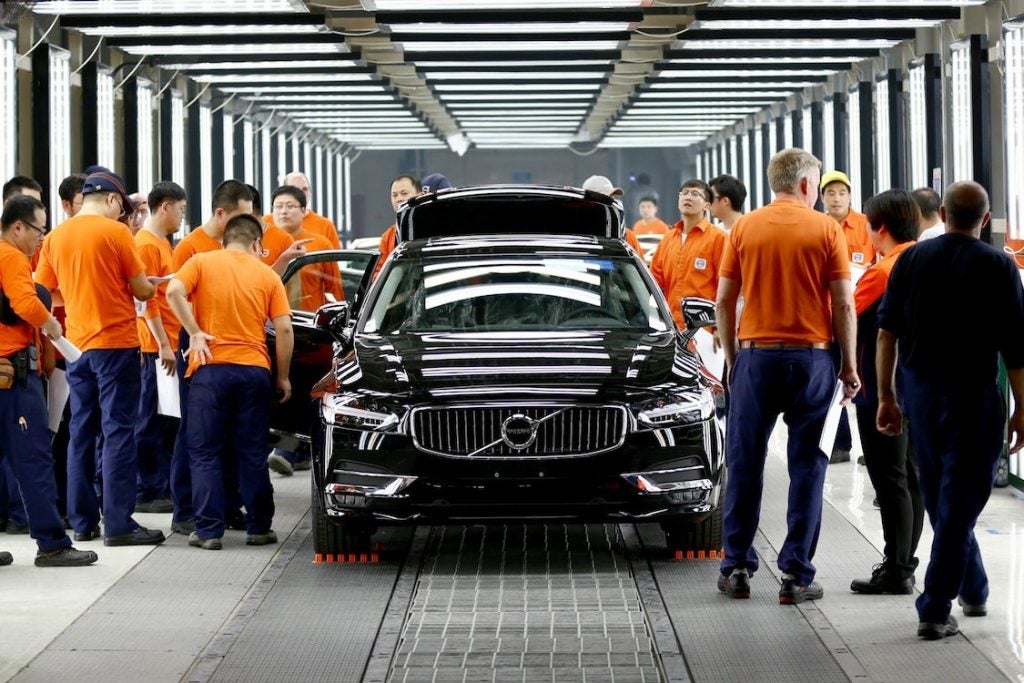Visitors passing through Detroit Metropolitan Airport may be surprised when they notice the signs announcing the arrival of GAC in the U.S. market.

Short for Guangzhou Automotive Corporation, it is one in an assortment of Chinese carmakers that has laid out plans to start selling vehicles in the U.S. For reasons unclear, the airport has yet to remove the signs, which can be found on the tram in the main terminal and several other locations, despite the fact that they were put up in 2017, when GAC put several of its vehicles on display at Detroit’s North American International Auto Show.
But the signs serve as a reminder of just how difficult it has proven for Chinese manufacturers to crack the American market. Plans by brands including not just GAC but Great Wall, Chery, Zotye and Geely have yet to come to fruition. Even after setting up a new headquarters in Los Angeles, BYD has been a no-show.
Patience could pay off
But the Chinese have been nothing, if not patient. While those domestic brands have failed to kick off their invasion, a handful of more familiar marques now import Chinese-made vehicles, including the Volvo S90 and the Buick Envision, as well as the Polestar 2. And there have been reports suggesting Tesla could follow.
Despite the struggles the Chinese have faced, the question, for most analysts, isn’t a matter of “if” China will ever make a major dent in the U.S. automotive market, but “when?” And the growing success manufacturers like Geely and BYD now are having in Europe suggests it may not take that much longer. And one of the reasons is the ongoing shift from gas- and diesel-powered vehicles to EVs.

Those few Chinese-made vehicles brought to the U.S. account for little more than an asterisk on the new vehicle sales charts. Americans have purchased just over $300 million worth of Chinese vehicles in the past 12 months. During the same period, U.S. motorists purchased more than $5 billion worth of Japanese-made vehicles (and substantially more produced by Japanese automakers at U.S.-based plants). South Korean auto imports totaled just short of $5 billion, with German-made vehicles totaling about $3.3 billion.
Roadblocks
There are a number of reasons why the Chinese have continued struggling for a foothold. Some observers point to the political divide between the U.S. and China. While Americans continue to snap up Chinese-made electronics and appliances, it’s an ongoing question of whether they’ll warm to vehicles carrying names like Great Wall.
There are also hefty tariffs that make it difficult to compete cost-effectively with existing brands, said Stephanie Brinley, principal auto analyst with IHS Insight. And, she adds, “The Chinese market is still growing, so coming to the U.S. market isn’t a high priority.”
Perhaps not, but as the Chinese economy, and the country’s new car market, in particular, begin to slow, domestic Chinese brands are growing more serious about exports.
Europe opens its doors

But they appear to be putting more of a priority on Europe. Just through the end of October Chinese brands have gained significant momentum on the continent this past year. And most of it has come by tapping into growing EU demand for battery-electric vehicles. All told, Chinese brands including SAIC MG, BYD, Great Wall and Nio sold 150,000 EVs there during the first ten months of 2022, according to Schmidt Automotive Research.
Europe’s appetite for battery-electric cars has grown rapidly and it now is the largest market in the world for that technology. Norway, for one, has been running as high as 70% EVs depending upon the month.
That could be the key for Chinese brands to gain ground in the U.S. next, according to Michael Dunne, founder and lead analyst with consulting firm ZoZo Go.
The challenge of launching new brands
There are still stumbling blocks, industry analysts warn, including political tensions, as well as U.S. incentives on Chinese goods. The revised EV incentives contained in the Inflation Reduction Act passed by Congress this year now exclude vehicles like the Chinese-made Polestar 2. The Volvo spinoff, owned by China’s Zhejiang Zheely, hopes to get around that barrier by producing some future products, including the upcoming Polestar 3, in the U.S.

(It isn’t alone, a growing number of foreign-owned brands plan to assemble EVs in the U.S. to qualify for incentives. That includes VinFast, the Vietnamese startup that will invest $2 billion to set up a factory in North Carolina to build its VF 8 EV starting in 2024.)
There are, of course, potential opportunities for China’s domestic automakers to export models using internal combustion technology to the States. But analyst Brinley says that window may have passed, noting, “The biggest hurdle is introducing a new brand,” especially at a time when sales of gas-powered models are expected to rapidly decline.
Just a matter of time
Still, most experts believe it’s just a matter of time until Chinese vehicles become more commonplace in the U.S. One manufacturer who could swing open the door is Tesla. The company initially said its plant in Shanghai would be limited to producing vehicles for the domestic Chinese market. But a Reuters report posted earlier this month cited sources claiming it is reconsidering that strategy. The factory is now the most productive of the company’s four assembly plants and has started shipping vehicles to Europe, Australia and other parts of Asia. According to the Reuters story, North America could be next.
Meanwhile, the largest and most aggressive of the Chinese manufacturers clearly don’t want to be locked out of the American market, Dunne and most other analysts believe. With Europe showing a readiness to accept Chinese brands, and with their home market growth leveling off, it’s just a matter of time before they finally make their long-awaited push.
Expect it to focus on EVs and, like other foreign automakers, the Chinese are expected to take a long-term approach that will include both exports and models they will build in new U.S. plants.
- Coinsmart. Europe’s Best Bitcoin and Crypto Exchange.Click Here
- Platoblockchain. Web3 Metaverse Intelligence. Knowledge Amplified. Access Here.
- Source: https://www.thedetroitbureau.com/2022/11/the-chinese-are-coming-the-chinese-are-coming/



